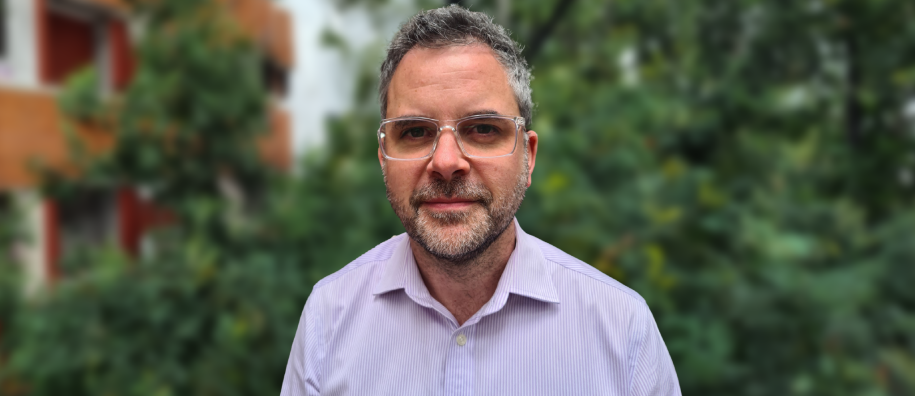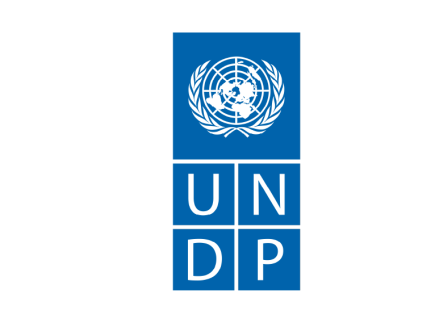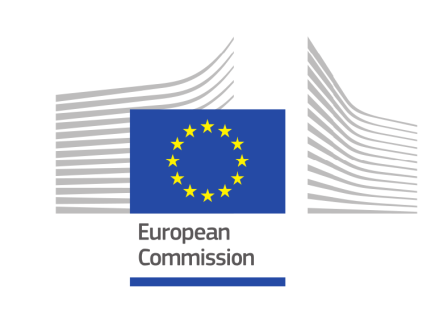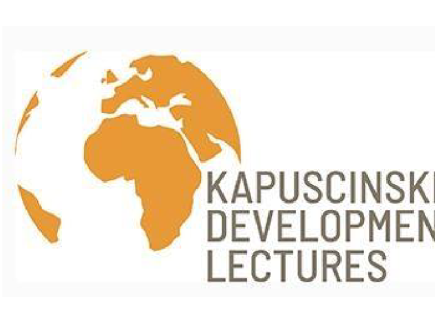
In November, Mykolas Romeris University (MRU) will host Jonathan Glennie, founder of Global Nation, a renowned scholar in the field of international development and global cooperation. A scholar will deliver a thought-provoking public lecture "The Future of Global Cooperation is Circular" and will introduce the innovative concept of Circular Cooperation, a groundbreaking initiative that has been developed collaboratively by him and an assembly of distinguished experts from across the globe. Jonathan Glennie is a renowned figure in the realm of international development and global cooperation. He is the author of "The Future of Aid: Global Public Investment," a seminal work that introduced the concept of Global Public Investment as a visionary framework for re-imagining the landscape of development finance. In addition to this, he has authored "The Trouble with Aid," another influential publication that delves deep into the challenges and opportunities of foreign aid. The project is a joint initiative of the European Commission, the United Nations Development Programme and Mykolas Romeris University. The project is funded by the European Commission.
To get a closer look at the eminent scientist, we asked him a few questions to understand in general what is the circular cooperation, what role do Lithuania play in the global context of international development and how MRU, as one of the largest social sciences and humanities universities in Lithuania, can contribute to building a sustainable circular economy.
You are going to deliver an exclusive lecture at Mykolas Romeris university. This will introduce the pioneering concept of circular cooperation, a ground-breaking initiative developed by you personally in collaboration between Global Nation and a team of renowned experts from around the world. How do you see Lithuania in the context of circular cooperation? What challenges, in your opinion, does Lithuania meet of circular cooperation considering the complexity of coordinating and aligning the interests and actions of various stakeholders involved in the circular economy?
The fundamental insight of the Circular Cooperation approach is that most models of international cooperation maintain the separation between so-called “developed” and “developing” countries. The former help the latter. South-South Cooperation is about horizontal relationships between countries in the Global South – it is a crucial part of the cooperation ecosystem, and yet it also maintains the separation between North and South.
In recent years the concept of “triangular” cooperation has come to the fore, intending to erode the binary donor/recipient relationship typical of traditional ODA (Official Development Assistance) and allow communities of different wealth levels to engage in development projects in a new way, building on complementary strengths. Typically, an organization based in a high-income country provides funding, a partner from a middle-income country provides expertise, and development impact is targeted at a country with a lower income. However, even this approach maintains a fundamental aspect of traditional “vertical” cooperation, namely that a poorer country is supported in its development by countries higher up the income scale.
Positioning the people of one community or country as “recipients” or “beneficiaries” creates barriers to their power, dignity and sustainable development. Moreover, fragility and vulnerability exist in countries of all wealth levels, and 21st century patterns of education, mobility and technology make it increasingly possible for countries and communities at all income levels to contribute and lead.
The use of spatial analogies to describe these three existing modes of cooperation – vertical, horizontal and triangular – allows us to propose the next evolution (perhaps revolution) in international cooperation projects. At Global Nation, we call it “circular” cooperation. This approach breaks down the North-South, donor-recipient divides and treats all countries as both contributors and beneficiaries of development cooperation and support.
Lithuania’s experience as part of the European Union since 2004 could be valuable. Like other EU member states, Lithuania benefits from EU structural funds as part of the EU's cohesion policy. The EU provides structural funds to support the economic and social development of its less-developed regions and to promote cohesion among member states. EU structural funds, including the European Regional Development Fund (ERDF), the European Social Fund (ESF), and the Cohesion Fund, play a crucial role in supporting Lithuania's economic and social development, helping the country address regional disparities and fostering long-term growth. The effective use of these funds is contingent on careful planning, efficient administration, and accountability, which are essential for realizing the full potential of EU investments. This experience can be crucial in sharing learning of how to build Circular Cooperation beyond Europe’s borders.
One major difference between the EU Funds and broader international cooperation, is the type of recipient country. ODA recipients typically “graduate” from concessional support at a certain level of income per capita, arbitrarily decided by World Bank calculation. Members of the EU, on the other hand, do not graduate from EU Funds. Since their inception, the EU Funds have been about convergence to a common standard, narrowing disparities among regions and member states.
Critical to the theory underpinning the EU funds, and to garnering public support for this redistribution of wealth, is the recognition that reducing disparities in living standards and building shared infrastructure is important for the progress and security of all, not just the direct recipients of grants. The narrative of the EU Funds thus differs substantially from the one that tends to accompany ODA. While aid is sometimes justified with an argument that it is in the long-term self-interest of donor countries, the much more common argument is that it is an act of generosity to other less fortunate countries. The language of mutual benefit is also significantly less patronizing. At a time when the aid sector is trying to “decolonize” the language as well as the practices of aid, this is worth reflecting on.
The most important aspect of EU Fund governance, and the way the EU Funds differ most substantially from ODA, is that all countries pay in, all receive, and all sit around the table deciding how funds should be spent. Could this approach be viable in some way more widely, either in other regions or globally? What would it imply for Circular Cooperation? Could a membership approach be adopted at the global level, for countries instead of states in a federal nation i.e. getting the balance right between ownership – that perennial development chimera – and ensuring a significant amount of financial support for agreed goals? On the other hand, there are some reasons to be wary of the additional bureaucracy of the EU Funds, and again these have parallels in global development.
Do you agree that addressing these challenges Lithuania requires effective communication, strong leadership, commitment from stakeholders, supportive policies, and a willingness to adapt and innovate? Circular cooperation is a complex undertaking, but overcoming these challenges is essential for advancing sustainability and achieving the goals of the circular economy.
I agree that addressing the challenges of advancing circular cooperation in Lithuania, as in any country, requires a combination of factors, including effective communication, strong leadership, commitment from stakeholders, supportive policies, and a willingness to adapt and innovate.
Clear and transparent communication is crucial to raise awareness about the principles of circular cooperation, its benefits, and the challenges it aims to address. Effective communication helps engage various stakeholders, including the public, businesses, and policymakers. Leadership from government, industry, and civil society is essential to drive this type of paradigm shift. Leaders can set a vision, inspire action, and create a sense of urgency for change. They can also coordinate efforts and set clear goals. Governments and other stakeholders will play a pivotal role in creating an enabling environment for circular cooperation. This includes regulatory frameworks, incentives, and supportive policies that encourage resource efficiency, waste reduction, and sustainable production and consumption.
Fundamentally, shifting paradigms to mutuality and circular cooperation involves rethinking traditional models, which can be challenging. It is important to emphasize the need for collaboration and knowledge sharing among countries, regions, and industries; sharing best practices and lessons learned can help accelerate progress
A circular cooperation approach affords respect, power and dignity to all countries and communities, because it recognizes them as globally relevant co-contributors at the international level. In that sense, it is very much in line with the universalist narrative behind the Sustainable Development Goals and the growing network of organizations pushing for Global Public Investment (GPI) principles of all benefit, all contribute, all decide.
Too often the psychological aspects of the “development” relationship are overlooked by bean-counter approaches to impact. But with the self-esteem associated with power and dignity, communities are more motivated to contribute and lead, which is itself likely to mean stronger impact even in terms of “hard outcomes” (measured in e.g. lives saved or children educated) – a virtuous circle of leadership, dignity and impact.
As the world discusses new approaches to public development finance, one relevant body of evidence is conspicuously lacking from the literature: the EU’s own Structural Funds. These large-scale international public expenditures, which have substantial similarities to ODA, South-South Cooperation and other forms of international public finance, have been a core part of the EU’s architecture for over four decades, but lessons from their successes and failures are seldom if ever drawn on in debates about the future of aid.
The fact that this cross-fertilization of ideas and experiences is so scarce is interesting and should be swiftly rectified. The EU Funds and international financial cooperation more broadly should not be seen as separate fields of research with separate journals and conferences etc, but similar groups of experts, practitioners and thinkers. Given the EU has developed a diversified and path-breaking use of public finance across member states coupled with its role as the world’s largest overall provider of official development assistance, EU members with unique experiences like Lithuania would be well placed to spearhead this conversation.
International aid has long struggled with the question of democratic oversight, which has dogged the aid effectiveness agenda since the beginning. Could the community oversight model be a blueprint for a new role for civil society in the oversight of international aid? And might the way that the EU involves the EU Parliament and national parliaments influence the aid system? Furthermore, EU Member states are obliged to provide up to half of the funds (depending on the objective) needed for the programmes and projects that are eligible for structural support. Receipts of EU Funds are capped at 4% maximum of GDP, although they are generally much less. The idea of co-funding should be explored more in the aid world, to get buy in, ensure national alignment and promote better outcomes.
Universities play a multifaceted role in advancing circular cooperation by providing research, education, collaboration opportunities, and leadership in the pursuit of more sustainable and circular economic systems. Their contributions are essential in driving the transition towards a circular economy. How do you see the role of MRU considering that it is one of largest Lithuanian university of social sciences? What perspectives could you draw for the university?
Universities are crucial parts of the development and cooperation ecosystem. They are often the places where new ideas emerge. They are important because of their research capabilities. MRU, being a university of social sciences, should continue to conduct research to better understand the challenges and opportunities in the transition to circular cooperation.
Second, universities also have a crucial role in educating the next generation of professionals, policymakers, and leaders. MRU could offer academic programs, courses, and training focused on sustainability, circular cooperation, and related fields. This can prepare students to enter the workforce with the knowledge and skills needed to promote circular cooperation in various industries.
Third, universities often serve as hubs for collaboration between academia, government, and industry. MRU could facilitate partnerships and collaborations with businesses, non-profit organizations, and government agencies to promote circular cooperation initiatives in Lithuania and beyond. These collaborations can lead to practical applications of circular cooperation.
MRU, as a prominent institution, can provide leadership by advocating for policies that support circular cooperation, in the region and beyond. They can engage in public discourse, host conferences and events, and work with other stakeholders to promote awareness and understanding of circular cooperation and its benefits.
And finally,in the context of the ongoing conflict in Ukraine, the concept of circular cooperation, which primarily focuses on sustainable and resource-efficient economic practices, may not be a primary or immediate concern. The conflict in Ukraine has led to significant humanitarian, political, and security challenges that take precedence. Do you see any potential ways in which circular principles and cooperation could contribute to the region's recovery and long-term development?
In a context where there is an ongoing conflict with significant humanitarian, political, and security challenges, it is understandable that immediate priorities are focused on resolving these pressing issues. However, even in such challenging circumstances, there can be potential ways in which circular cooperation could contribute to the region's recovery and long-term development.
After conflicts, there is often a need for significant reconstruction and rehabilitation. And many of the most important experiences come from countries in the Global South, including the country where I live, Colombia. A Circular Cooperation approach would seek out such experiences, while also looking to share the region’s own experiences widely.
Anyone from the Global North who has traveled in the Global South knows how much they have learnt from different ways of approaching challenges, of working together, of being. They often have utterly life-changing experiences. And yet much of the “international cooperation” ecosystem is still stuck in its conservative out-of-date 19th century approach which theorizes supposedly “developed” countries to be the repository of knowledge and know-how, to be shared with “developing” countries.
Yes, of course there is more money in some countries than others, and that has implications for global financial responsibility including redistribution and reparation. But it is false to imply that countries in the Global North cannot benefit from cooperation with poorer countries and learn from solutions piloted elsewhere in the world, just as it is also false to imply that countries in the Global South cannot contribute their expertise – in this case about conflict and peace – in other parts of the world, including much wealthier countries.
There is nothing totally new under the sun, and there are examples of attempts to circularize cooperation over the years, some more successful than others. However, there has never been a concerted push, backed by theory and methodology and led by leading actors in the cooperation ecosystem. The time has come to build circular cooperation programmes to complement and eventually replace international development projects still laboring under a donor-recipient mindset.


